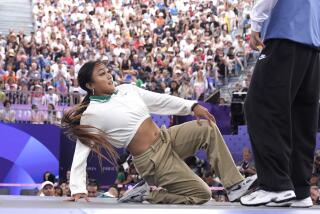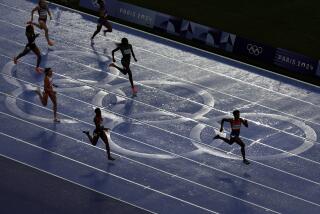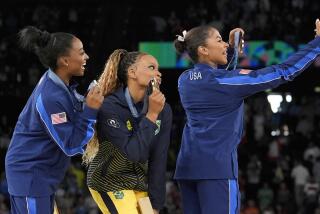Is sex testing in the Olympics a foolâs errand?
Tests attempting to distinguish men from women for Olympic competition are almost as old as the modern Olympics. But as I write in an article in todayâs Los Angeles Times, the science behind these tests is anything but clear-cut. Depending on the study, it is estimated that somewhere from .5% to 1.7% of people are born with some intersex condition, meaning they have at least some characteristics of both sexes. In those cases, the Olympic Committee has a decision to make: Which race will the athlete run? Starting with these Games, the IOC has decided to use testosterone as its test.
But a number of experts in a range of fields are voicing objections to these tests. Dr. Andrew Sinclair, the researcher who identified one of the genes that had been used as an Olympic sex test, says his response to its use for this purpose was âone of horrorâ because he said his research had also led him to understand that gender is simply not something that can be measured biologically, and certainly not definitively.
âGender and sex are not black-and-white issues. We are all on a spectrum somewhere,â Sinclair said. âItâs very hard to come up with a single measure that will put you in one group or the other. You canât use a single measure to place someone on the spectrum. That understanding has to come first, and then people will realize that sex testing in general is misguided.â
According to Rebecca Jordan-Young, who researches gender studies at Barnard College, âbased on the data we have, you canât make any kinds of predictions of athletic performance by knowing an athleteâs testosterone levels.â In any other scientific or medical forum, she added, such a test would never pass muster. Making matters more complicated, she said, because most studies have been done in men, there is no way to know whether the complex female hormonal environment processes testosterone differently than in men.
Jordan-Young also points to a condition called congenital adrenal hyperplasia (CAH), which leads to increased testosterone but also leads to short, often obese physiques. âIt would be very unusual for someone with CAH to become an elite athlete, regardless of their testosterone levels,â she said.
The stakes are high because there is evidence of collateral damage when a test becomes public. Both Maria Jose Martinez-Patiño and Caster Semenyaâs testing became public, and both of them reported undergoing significant associated trauma. Such tests are usually requested for athletes because of their physical appearance, and judgment is often rushed. When Semenya was tested, one athlete told the press that âthese kinds of people should not run with us.â A writer for the New Yorker, clearly fond of alliteration, called her âbreathtakingly butch.â
Jordan-Young said she is especially worried about a clause in the new rules that puts much of the burden of identifying athletes with high testosterone onto the Olympic committees of individual countries, which may have less oversight than the IOC. âWe think this is just going to lead to more witch hunts,â she said.
Perhaps deepening this point is a little-mentioned part of the new rule: Athletes who fail the test may compete but as men or must determine a way to get their hormone levels down below the male range â something newspaper reports have said Caster Semenya has been doing.
According to Hida Viloria, director of the Organisation Intersex International, such therapies amount to âan athlete doing an experiment on themselves,â and she likens the new rules to âbullying against butch women.â
âItâs forcing women who are not stereotypical to feminize their bodies,â she said.
Katrina Karkazis, a Stanford bioethicist who recently wrote an influential critique on the topic with Jordan-Young, said the bottom line is that attempts to deal with sex with scientific tests amount to putting a round peg in a square hole. She points out that there have been no confirmed cases of men posing as women in Olympic history and that Caster Semenya, who reportedly had three times the normal amount of testosterone for a woman, would not have qualified for a menâs race if it had been required at the time and has not even been consistently superior to other women in her sport. The same is true of other athletes who have gone through sex testing.
âThis is a solution in search of a problem. Iâm just sick of these biological answers to what is fundamentally a social question.â






